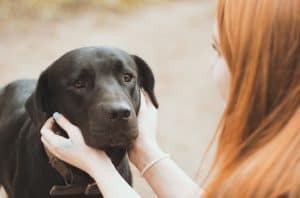It is never easy to say goodbye to our pet, even when we know it is time. Unlike humans, pets can have a difficult time with passing away – even when they are very sick or elderly. The process can be drawn out, painful, and difficult to watch. Humane euthanasia is used by your veterinarian to help assist in this process when animals are struggling with end-stage disease or when “it is time.” This process can be difficult to discuss, but your veterinarian is here for you and your pet and is happy to discuss any component of this process and the decisions that go into it.
How Do I Know When It Is Time?
As pet owners, the hardest task to face is deciding when it is time. There are many things to consider with this decision. The biggest questions we ask to help guide us include:
- Is my pet eating/drinking?
- Is my pet able to urinate/defecate with control?
- Is my pet able to walk without assistance?
- Is my pet in pain?
- Is my pet still enjoying daily activities that they usually love?
There are many factors to consider with this decision – we recommend having a discussion with your veterinarian to help with this challenging topic. Some pet owners make a calendar and mark good days and bad days, then tally the amount at the end of the month to help gauge quality of life. Other useful resources include the Ohio State Scale and the Quality of Life Scoring Tools. These websites are great quantifiers to help provide guidance in knowing it is the right time for you and your pet. Each pet and each health situation is different. There is not usually a black or white answer on deciding when it is time. These resources and your veterinarian are great assets in helping provide guidance through this process.
How to Prepare

Allow your family members to have private time to say their goodbyes. If you have young children in the family, it can be helpful to plan ahead and explain to them what will happen. Each family member may react differently to the decision. It is important to grieve together and allow room for discussion. Sharing memories of your pet together can be a time to reflect and help ease the grieving process.
What to Expect
Euthanasia is performed using an overdose of an anesthesia medicine injected into your pet’s vein. A veterinarian will come in and talk to you and do a brief examination of your pet when you come in. Some veterinarians will come to your house to perform the procedure. Some doctors will place a catheter into your pet’s vein beforehand that allows the medicine to be given more easily. Additional medication may be given to help your pet relax beforehand. The veterinarian will inject a medicine into your pet’s vein that makes them sleepy, then stops their heart from beating. Usually, pets go very peacefully. Occasionally after they have passed, they sometimes lose control of their bowels and bladder or can make involuntary movements or noises. Their eyes also do not close after they have passed. Your veterinarian will help you know when they have passed on.
Some pet owners prefer to stay with their pet during the procedure, but some pet owners may feel too emotional or become stressed during the procedure which can lead to stress in your pet. The grieving process is different for every person. If you do not feel comfortable staying during the procedure, do not worry – we will make sure your pet is given lots of love the entire time.
Aftercare
There are several options for aftercare for your pet. Some pet owners like to take their pet home with them to bury them in their favorite place. Another option is cremation. Your pet will be taken care of and the ashes may be returned to you to keep or spread. Some veterinarians will make a paw print or a lock of hair for your family to remember them by. Your veterinary staff will talk to you about these options and help you decide what is best for you and your pet.
This decision is never easy and we understand how hard it can be to say goodbye to a beloved pet. Our veterinarians and trained staff are here to help guide you and help you make peace with your decision. If you have any additional questions about this subject, please feel free to contact us or call your local veterinarian.

